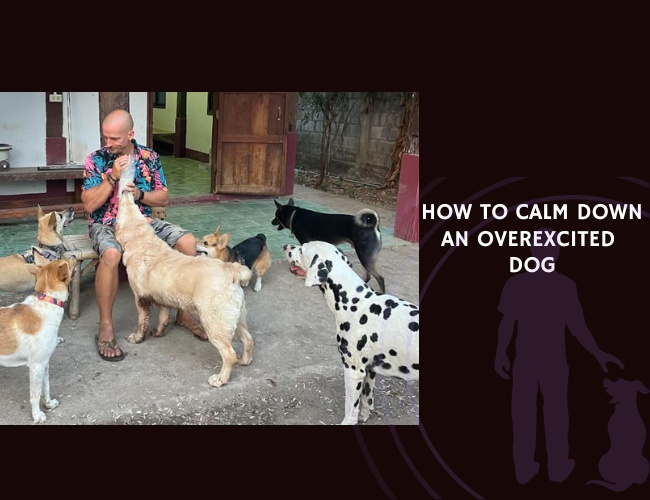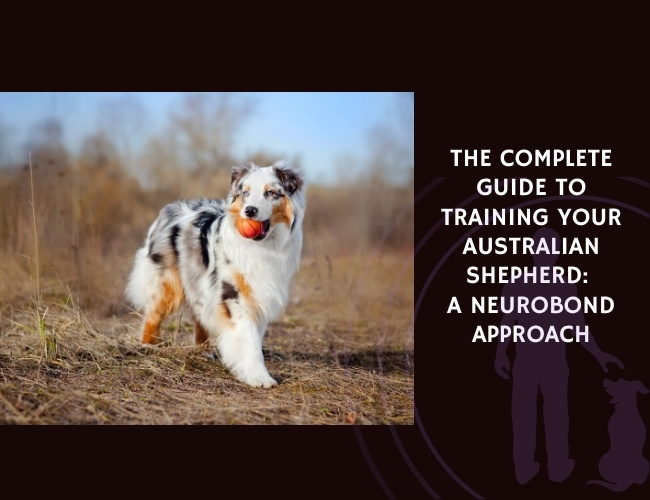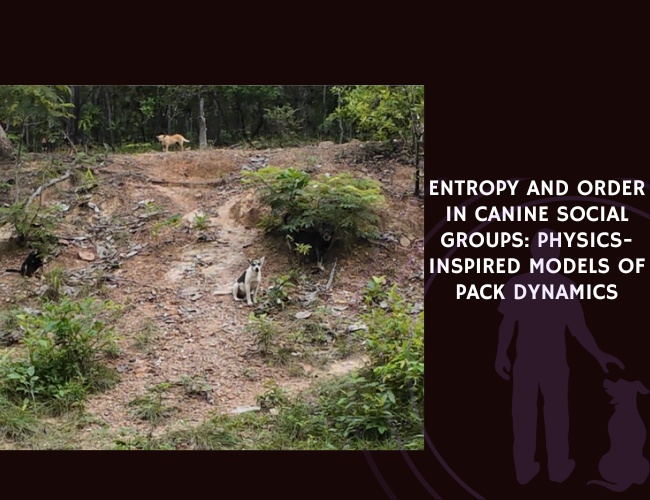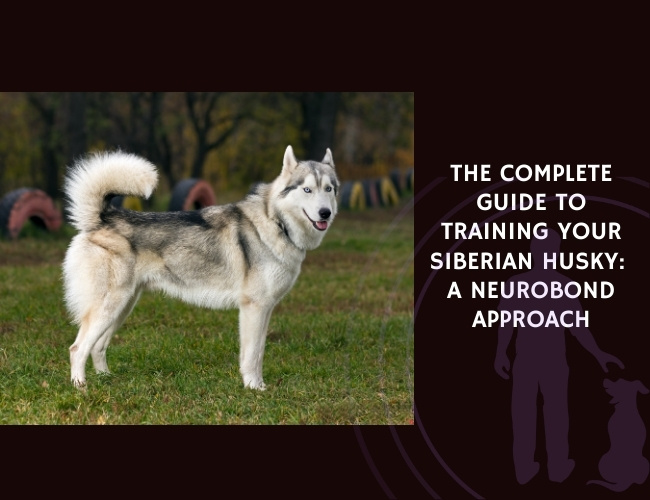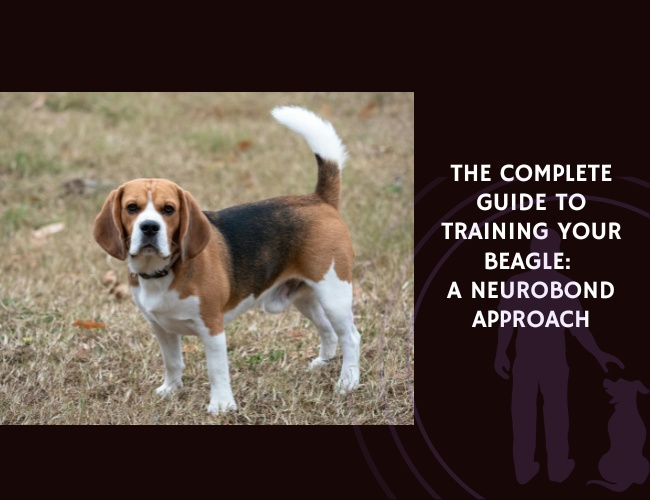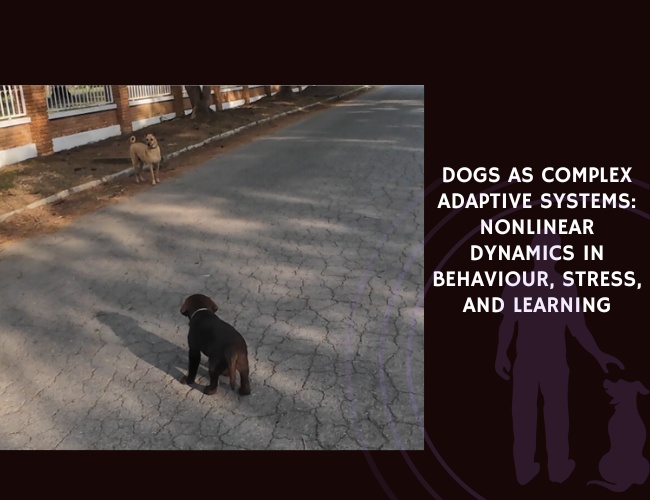Introduction: Understanding Your Dog’s Excitement
When your furry friend transforms from a calm companion into a whirlwind of energy, you’re witnessing more than just enthusiasm—you’re observing a complex interplay of neurological and physiological systems at work. Every dog owner has experienced those moments when their beloved pet seems unable to settle, bouncing off walls with an energy that feels impossible to contain. Let us guide you through understanding what’s really happening inside your dog’s mind and body during these intense moments of overexcitement.
The journey to helping your overexcited dog begins with recognizing that their behavior isn’t simply “being naughty” or lacking discipline. Behind those frantic zoomies and inability to focus lies a sophisticated stress response system that evolved over thousands of years. Understanding these mechanisms empowers you to become not just a dog owner, but a compassionate guide who can help your four-legged friend navigate their emotional world with confidence and calm.
Did you know that when your dog becomes overexcited, their body releases a cascade of hormones that can take up to 20 minutes to reach peak effect? This biological reality means that calming an overexcited dog requires patience, understanding, and the right strategies tailored to their unique physiology. 🐾
The Science Behind Over-Arousal
Understanding the Stress Response System
Your dog’s excitement originates in two primary biological systems that work in tandem to create what we observe as overexcitement. The first is the Hypothalamic-Pituitary-Adrenal (HPA) axis—think of it as your dog’s internal alarm system that releases stress hormones like cortisol when they perceive something exciting or challenging. The second is the sympatho-adrenomedullary (SAM) axis, which provides that instant burst of energy through catecholamines.
When your playful pup spots their favorite toy or hears the doorbell, these systems spring into action faster than you can say “sit.” The SAM-axis responds within seconds, flooding their body with adrenaline-like chemicals that prepare them for immediate action. Meanwhile, the HPA axis begins its slower but more sustained response, with cortisol levels peaking roughly 20 minutes after the initial trigger. This dual-system response explains why your dog might seem to calm down initially, only to experience a second wave of excitement minutes later.
The timing cascade of arousal:
- Milliseconds to seconds: Parasympathetic withdrawal (the calming system steps back)
- Seconds to minutes: Sympathetic activation (excitement builds)
- 15-20 minutes: Cortisol peaks (sustained arousal state)
- 30-60 minutes: Return to baseline (if properly managed)
When Excitement Becomes Problematic
Not all excitement is created equal, and understanding the difference between healthy enthusiasm and problematic over-arousal is crucial for your dog’s wellbeing. Healthy excitement is self-limiting—your dog gets excited about dinner but can still respond to basic commands and settle once they’ve eaten. Problematic over-arousal, however, creates a state where your furry friend literally cannot calm themselves down, trapped in a cycle of escalating energy.
The research tells us that when the stress-axis fails to return to its resting state, chronic activation can lead to significant behavioral and health issues. In overexcited dogs, this manifests as an inability to disengage from stimulating situations, impulsive behaviors that seem out of character, and what behaviorists call “choking under pressure”—when your normally obedient dog suddenly can’t perform simple commands they know well.
You might notice your overexcited dog displaying “here-and-now oriented” behaviors—frantically jumping, spinning, or barking—rather than the “future-oriented” behaviors of a calm dog who can wait patiently for a treat or follow multi-step commands. This shift represents a fundamental change in how their brain processes information during high arousal states.
Behavioral Markers: Reading Your Dog’s Arousal Levels
Signs of Healthy Engagement vs. Over-Excitement
Learning to read your dog’s body language is like learning a new language—one that speaks volumes about their internal state. Healthy play and engagement have a rhythmic quality: bursts of activity followed by natural pauses, responsive eye contact, and the ability to redirect attention when called. Your dog remains connected to you even in their joy.
Healthy excitement looks like:
- Play bows with relaxed facial features
- Soft, curved body movements
- Brief pauses to “check in” with you or playmates
- Ability to respond to name or simple cues
- Natural breaks in activity for sniffing or exploring
Over-excitement warning signs:
- Rigid, tense body posture despite apparent “happiness”
- Dilated pupils that don’t adjust to changing light
- Excessive panting unrelated to temperature or exercise
- Inability to hear or respond to familiar commands
- Repetitive, almost compulsive behaviors (spinning, jumping)
- Mounting behaviors unrelated to sexual maturity
- Nipping or mouthing that becomes increasingly hard
The Escalation Pattern
Understanding how your dog escalates from calm to overexcited helps you intervene at the right moment. Think of arousal as a ladder your dog climbs—it’s much easier to guide them down from the third rung than from the tenth. Most dogs follow a predictable pattern of escalation that, once you learn to recognize it, becomes your roadmap for intervention.
The escalation typically begins with increased alertness—ears forward, tail up, body weight shifting forward. This progresses to more active engagement—quick movements, higher-pitched vocalizations, decreased response to environmental cues. Finally, if unchecked, your dog reaches the over-arousal threshold where rational thought gives way to pure instinctive reaction.
During this escalation, your dog’s prefrontal-limbic-striatal networks—the brain regions responsible for decision-making and impulse control—become increasingly compromised. The amygdala, your dog’s emotional alarm center, essentially hijacks the thinking brain, making calm behavior nearly impossible without intervention.
Training Techniques for Arousal Regulation
Building the Calm Foundation
Creating a calm dog doesn’t happen in moments of crisis—it’s built during quiet times through consistent, thoughtful training. Think of calmness as a skill your dog needs to practice, just like sit or stay. The beauty of this approach is that you’re not suppressing your dog’s natural enthusiasm; you’re teaching them how to regulate it themselves.
Start with “capturing calmness”—whenever you notice your dog naturally settling, mark this behavior with a calm “yes” or click, followed by a gentle reward. This might be when they’re lying on their bed, sitting quietly while you prepare their food, or simply watching the world go by. By reinforcing these moments, you’re literally strengthening the neural pathways associated with calm behavior, making it easier for your dog to access this state in the future.
The Relaxation Protocol progression:
- Begin in a completely calm environment
- Reward settled positions (down, sit calmly)
- Gradually increase duration before rewarding
- Add mild distractions while maintaining calm
- Practice in different locations
- Integrate into daily life situations
Cognitive Behavioral Approaches
Recent research on cognitive behavioral interventions shows that structured training can actually influence your dog’s autonomic nervous system, promoting better physiological regulation. This means that behavioral training doesn’t just change what your dog does—it changes how their body responds to excitement at a fundamental level.
One powerful technique is “Look at That” (LAT) training, where you teach your dog to calmly observe triggers without reacting. Start with triggers at a distance where your dog notices but doesn’t become overexcited. Mark and reward the calm observation. This builds a new neural pathway: see exciting thing → stay calm → get reward. Over time, this rewires their automatic response to potentially exciting stimuli.
The “Ready, Set, Down” game teaches impulse control through structured excitement. Get your dog mildly excited with play, then cue “down.” Reward the moment they comply. Gradually increase the excitement level before asking for the down. This teaches your dog that they can go from high arousal to calm on cue—a invaluable life skill.
Strategic Use of Incompatible Behaviors
You can’t simultaneously run in circles and lie down calmly—this principle of incompatible behaviors is your secret weapon against overexcitement. When you see early signs of escalating arousal, redirect to a calm, incompatible behavior before your dog reaches their threshold.
Teaching a strong “mat” or “place” command creates a physical anchor for calmness. The mat becomes associated with relaxation through consistent practice. When excitement begins building, sending your dog to their mat interrupts the escalation pattern and provides a clear alternative behavior. The physical act of going to the mat and settling engages different motor patterns than those involved in excited behaviors.

Environmental Management Strategies
Creating Calm Spaces
Your home environment profoundly influences your dog’s arousal levels. Just as you might dim lights and play soft music to relax, your dog needs environmental cues that promote calmness. Designate specific areas as “calm zones”—spaces where exciting activities never occur, where the energy is always peaceful and predictable.
These calm zones should include comfortable bedding, perhaps with raised edges that provide a sense of security. Consider using pheromone diffusers that release calming chemical signals. The temperature should be comfortable—not too warm, which can increase restlessness, nor too cold, which can create tension. Some dogs benefit from gentle background noise like classical music or white noise, which masks sudden environmental sounds that might trigger excitement.
Essential elements of a calm zone:
- Located away from high-traffic areas
- Comfortable, supportive bedding
- Consistent low lighting
- Minimal visual stimulation (away from windows showing busy streets)
- Optional calming aids (pheromones, gentle music)
- Never used for play or exciting activities
Managing Trigger Exposure
Since stress responses are triggered by external demands and emotional conditions, intelligently managing your dog’s exposure to excitement triggers is crucial. This doesn’t mean avoiding all stimulation—that would create its own problems. Instead, it means thoughtfully controlling when, how, and for how long your dog encounters exciting stimuli.
Create a “trigger inventory” for your dog. What specifically sends them into overdrive? Common triggers include doorbells, other dogs, car rides, or specific toys. Once identified, you can develop management strategies for each. For unavoidable triggers like doorbells, you might install a visual doorbell that doesn’t make noise, giving you time to prepare your dog before guests arrive.
The concept of “threshold distances” applies here beautifully. Every trigger has a distance at which your dog notices but remains calm, and a closer distance where control is lost. Always work within the calm zone, gradually decreasing distance only as your dog maintains composure. This systematic desensitization, paired with counter-conditioning (pairing the trigger with calm, positive experiences), rewrites your dog’s emotional response over time.
Routine as Regulation
Dogs thrive on predictability, and a well-structured routine acts as a natural arousal regulator. When your dog knows what to expect and when, their stress-response systems don’t need to remain on high alert. This predictability allows the HPA axis to maintain a healthier baseline, making overexcitement less likely.
Structure your day with clear transitions between activity and rest. Morning might begin with calm sniffing walks (not high-energy runs), followed by a predictable breakfast routine, then a designated rest period. Afternoon could include training or enrichment activities, another calm walk, dinner, and evening settling time. The key is consistency—your dog’s body begins to anticipate and prepare for each phase, naturally regulating arousal levels.
The Role of Exercise and Mental Stimulation
Quality Over Quantity
There’s a pervasive myth that exhausting an overexcitable dog will solve the problem. In reality, excessive physical exercise can create an adrenaline junkie who requires ever-increasing amounts of stimulation to feel satisfied. Instead of running your dog ragged, focus on the quality and type of activities you provide.
Sniffing walks, where your dog is encouraged to explore scents at their own pace, engage the seeking system in the brain while maintaining relatively low arousal. This type of activity is mentally satisfying without creating the sympathetic nervous system activation associated with high-intensity exercise. A 30-minute sniffing walk can be more calming and tiring than an hour of fetch.
Calming exercise alternatives:
- Sniffing games and scent work
- Gentle swimming (if enjoyed)
- Slow, exploratory walks in nature
- Balance and proprioception exercises
- Gentle tug with rules and breaks
- Food puzzle toys that encourage problem-solving
Mental Enrichment for Arousal Balance
Mental stimulation that requires focus and problem-solving naturally promotes a calmer state. When your dog engages in cognitive tasks, blood flow increases to the prefrontal cortex—the brain’s executive control center—strengthening its ability to regulate emotional responses. This is why a good training session often leaves dogs more settled than physical exercise alone.
Introduce “thinking games” throughout the day. Hide treats around the house for your dog to find, teaching them that calm, methodical searching yields rewards. Use puzzle feeders that require manipulation and strategy rather than frantic effort. Teach new tricks that require concentration and precision. These activities build frustration tolerance and impulse control while providing appropriate mental stimulation.
The timing of mental enrichment matters too. Offering puzzle toys or training sessions when you notice early signs of building excitement can redirect that energy into focused activity. This prevents the escalation to overexcitement while still allowing your dog to engage and express themselves.
Frantic. Flooded. Trapped.
Biology fuels chaos. Overexcitement isn’t mischief but a cascade of stress hormones and adrenaline surging through your dog’s body. These chemical waves can peak minutes after the trigger, locking them in a heightened state of arousal.
Excitement divides in kind. Healthy enthusiasm fades once needs are met, while problematic over-arousal spirals into a cycle where settling feels impossible. In this state, even simple cues vanish beneath the noise of stress.
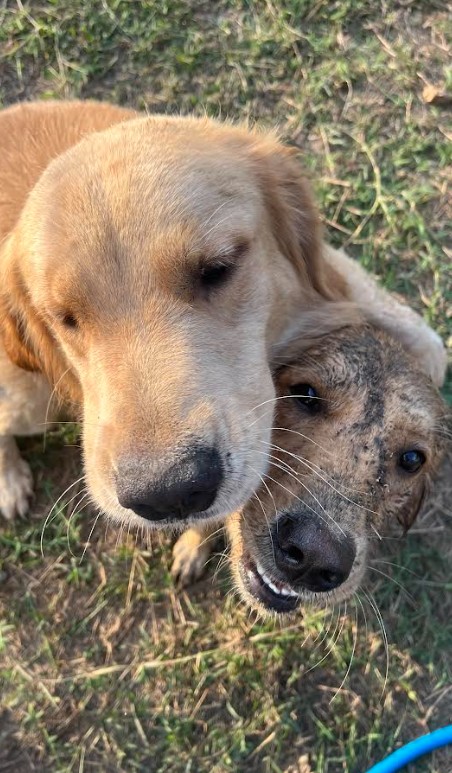


Patterns reveal the truth. Jumping, spinning, and barking show a brain caught in the present moment, unable to plan or pause. Recognizing these signs helps you guide your dog back to balance with patience and strategy.
Nutritional Factors in Excitement Management
Diet’s Impact on Behavior
What your dog eats directly influences their neurochemistry and, consequently, their arousal levels. High-sugar, high-carbohydrate diets can create blood sugar spikes and crashes that manifest as periods of hyperactivity followed by irritability. Similarly, foods with artificial colors and preservatives have been linked to increased reactivity in some dogs.
Consider transitioning to a balanced diet with quality proteins as the primary ingredient. Proteins provide amino acids like tryptophan, which the body converts to serotonin—a neurotransmitter associated with calmness and well-being. Complex carbohydrates release energy slowly, maintaining stable blood sugar and mood throughout the day.
Nutritional strategies for calmer behavior:
- Feed smaller, more frequent meals to maintain stable blood sugar
- Choose foods with named meat proteins as first ingredients
- Avoid foods with artificial colors and excessive preservatives
- Consider supplements like L-theanine or fish oil (with veterinary guidance)
- Ensure adequate B-vitamins for nervous system health
- Monitor for food sensitivities that might cause discomfort and restlessness
Timing and Feeding Rituals
How and when you feed your dog can be just as important as what you feed them. Frantic feeding creates arousal around mealtimes that can spill over into other areas of life. Instead, create calm feeding rituals that promote relaxation and impulse control.
Ask for a calm behavior before meals—perhaps a sustained down-stay while you prepare the food. Use slow-feeder bowls or puzzle feeders that require thoughtful engagement rather than gulping. Some dogs benefit from hand-feeding portions of their meals during calm moments throughout the day, reinforcing the connection between calmness and good things happening.
Understanding Individual Differences
Coping Styles and Personality
Just as humans have different stress responses, dogs exhibit varying coping styles that influence their arousal patterns. Some dogs are naturally “high reactors” who produce more catecholamines and cortisol in response to stimuli. Others are “low reactors” who maintain steadier physiological states. Understanding your dog’s individual coping style helps you tailor interventions appropriately.
High-reactor dogs often need more structured support and may benefit from:
- More frequent calm breaks during activities
- Lower-intensity exercise with emphasis on sniffing and exploration
- Careful management of exciting triggers
- Possibly longer to return to baseline after excitement
- Extra practice with relaxation protocols
Low-reactor dogs might seem easier but still need:
- Adequate mental stimulation to prevent boredom
- Clear boundaries to prevent pushing limits
- Regular check-ins to ensure they’re not suppressing stress
- Variety in activities to maintain engagement
Breed Tendencies and Genetic Factors
While every dog is an individual, breed tendencies can offer insights into arousal patterns. Herding breeds, bred for sustained vigilance and quick responses, often show hair-trigger arousal systems. Terriers, selected for independent hunting, might display intense, focused excitement that’s hard to interrupt. Guardian breeds might have slower-building but longer-lasting arousal when triggered.
Understanding these tendencies isn’t about limiting expectations—it’s about working with your dog’s genetic heritage rather than against it. A Border Collie’s intense focus can be channeled into calming activities like precise obedience work. A terrier’s prey drive can be satisfied through appropriate games that include built-in calm periods.
Your dog’s biological sex also influences stress responses, with some studies suggesting males and females may process and recover from arousal differently. Intact dogs may show different patterns than altered dogs due to hormonal influences. Age plays a role too—adolescent dogs often struggle more with arousal regulation as their brains develop, while senior dogs might need different approaches as their nervous systems change.

When to Seek Professional Help
Recognizing When It’s More Than Excitement
Sometimes, what appears as overexcitement masks underlying issues that require professional intervention. If your dog’s arousal seems disconnected from environmental triggers, occurs in waves without clear cause, or is accompanied by other behavioral changes, it’s time to consult professionals.
Red flags requiring professional assessment:
- Sudden onset of overexcitement in a previously calm dog
- Inability to settle even in completely calm environments
- Overexcitement accompanied by aggression or fear
- Self-injurious behaviors during excited states
- Excessive vocalization that seems compulsive
- Weight loss or changes in appetite alongside behavior changes
- Sleep disturbances or inability to rest properly
Building Your Support Team
Managing an overexcitable dog often requires a multi-faceted approach. Your support team might include a veterinary behaviorist who can assess whether medication might help your dog while you work on behavior modification. A certified dog behavior consultant can develop customized training plans based on your dog’s specific triggers and responses. Your regular veterinarian should rule out medical causes like thyroid imbalances or pain that might contribute to restlessness.
Don’t underestimate the value of support from other dog owners who understand the challenge. Online communities and local training groups can provide encouragement and practical tips. Remember, seeking help isn’t a sign of failure—it’s a sign of dedication to your dog’s wellbeing.
Long-Term Prevention Strategies
Building Resilience from Puppyhood
If you’re starting with a puppy, you have a golden opportunity to build resilience and arousal regulation from the beginning. Early experiences shape how the stress-response system develops. Puppies exposed to varied but manageable challenges, with plenty of support and recovery time, develop more adaptive stress responses.
Focus on positive socialization that includes not just exposure to different stimuli, but also learning to be calm around them. Teach your puppy that exciting things happen, and then calm things happen, and both are good. This creates neural pathways that support flexible arousal regulation throughout life.
Puppy resilience building:
- Brief, positive exposures to varied stimuli
- Always end on a calm, successful note
- Teach relaxation as actively as you teach commands
- Provide predictable routines with gentle challenges
- Support recovery with adequate sleep (puppies need 18-20 hours!)
- Avoid overwhelming socialization or “flooding”
Maintaining Progress Over Time
Arousal regulation is a skill that requires ongoing practice. Even after your dog masters calmness, continue reinforcing these behaviors. The principle of “use it or lose it” applies to neural pathways—behaviors that aren’t practiced can fade.
Create a maintenance plan that includes regular practice of relaxation protocols, ongoing management of triggers, and periodic assessment of what’s working. As your dog matures, their needs may change. The adolescent who needed intensive management might become a calm adult who needs less structure. Conversely, a senior dog might need adjusted strategies as sensory or cognitive changes occur.
Remember that setbacks are normal and don’t mean failure. Stress, changes in routine, health issues, or environmental changes can temporarily affect arousal regulation. When setbacks occur, return to basics: increase structure, simplify expectations, rule out medical issues, and gradually rebuild. Your patience and consistency during these times strengthen your bond and your dog’s trust in you as their guide.
The Science of Bonding and Calm
Your Role as Co-Regulator
You are more than your dog’s trainer or owner—you’re their co-regulator. Research on attachment and stress shows that secure relationships serve as a buffer against stress-system activation. When your dog trusts that you’ll keep them safe and help them navigate challenges, their baseline arousal naturally decreases.
This co-regulation happens through multiple channels. Your calm breathing can influence your dog’s respiratory rate. Your relaxed body posture signals safety. Your consistent, predictable responses to their excitement provide the external regulation their overwhelmed nervous system needs. This isn’t anthropomorphism—it’s biological synchrony observed across mammalian species.
Practice being the calm you want to see in your dog. When they’re escalating, consciously slow your movements and lower your voice. Avoid the temptation to match their energy with frustrated commands or physical intervention. Instead, become an anchor of calmness they can orient to when their internal world feels chaotic.
Creating Positive Associations
Every interaction during overexcited states is a learning opportunity—the question is what your dog is learning. If overexcitement consistently leads to negative consequences (scolding, isolation, physical correction), your dog may develop anxiety around their own arousal, creating a vicious cycle of excitement and stress.
Instead, frame calm behavior as the gateway to everything good in your dog’s life. Walks happen after calm waiting at the door. Play begins after a moment of stillness. Attention comes for settled behavior, not for demanding barks or jumps. This isn’t about withholding love—it’s about teaching your dog that calmness is the most effective way to get what they want.
Practical Daily Protocols
The Morning Routine Reset
How you start the day sets the tone for your dog’s arousal regulation. Instead of immediately launching into exciting activities, create a gradual wake-up routine that eases your dog into the day. This might include a few minutes of gentle petting while they’re still drowsy, a calm bathroom break, and a peaceful few minutes together before breakfast.
If your dog tends to wake with high energy, have a special morning protocol ready. Perhaps they go immediately to their mat for a few minutes of calm before the day begins. Or maybe you do a brief, gentle massage that promotes parasympathetic activation. The key is consistency—when your dog knows exactly how mornings unfold, their stress-response system doesn’t need to activate in anticipation of unpredictable events.
Transition Rituals
Dogs often struggle with transitions—coming home, leaving for walks, moving from play to rest. Create specific rituals that signal these transitions and provide a bridge from one arousal state to another. For example, coming home might involve: enter calmly, ignore initial excitement, wait for four paws on floor, gentle greeting, then a brief settling period before full interaction.
These rituals serve multiple purposes. They provide predictability that reduces anticipatory arousal. They create space for your dog’s physiology to adjust between activities. And they reinforce that all good things come through calmness, not through escalating excitement.
Evening Wind-Down
Just as important as morning routines are evening wind-down protocols that prepare your dog’s nervous system for rest. Begin reducing stimulation an hour or two before bedtime. Dim lights signal the body to begin producing melatonin. Gentle activities like brushing or massage activate the parasympathetic nervous system.
Consider implementing a “sunset protocol”—as daylight fades, activities become progressively calmer. This might mean switching from training to sniffing, from toys to chew bones, from interaction to independent settling. By the time bedtime arrives, your dog’s arousal system has gradually down-regulated, promoting better sleep and recovery.
Conclusion: Your Journey Together
Managing an overexcitable dog is not about suppressing their joy or dimming their light—it’s about giving them the tools to navigate their emotions successfully. Every dog can learn better arousal regulation with patience, understanding, and the right support. The journey might be longer for some dogs than others, but each small success builds toward a calmer, happier life together.
Remember that your overexcitable dog isn’t choosing to be difficult. Their nervous system is doing exactly what it evolved to do—responding intensely to a stimulating world. Your role is to be their guide, their safe harbor, and their teacher as they learn to modulate these natural responses. With consistent application of these strategies, you’re not just managing behavior—you’re literally reshaping how your dog’s brain and body respond to excitement.
The bond you build through this process extends far beyond simple obedience. You’re teaching your dog that they can trust you to help them when they feel overwhelmed. You’re showing them that the world can be exciting and safe simultaneously. Most importantly, you’re giving them the gift of resilience—the ability to experience joy without losing themselves in it.
Is your dog’s overexcitement challenging? Absolutely. But within that challenge lies an opportunity to deepen your understanding of your furry friend and strengthen your relationship in ways you might never have imagined. Every moment you invest in helping your dog find calm is a moment invested in their long-term wellbeing and your shared happiness. 🧡
The path ahead might require patience, consistency, and sometimes professional support, but you’re not walking it alone. Your dog is your partner in this journey, and together, you can transform overwhelming excitement into joyful, manageable enthusiasm that enriches both your lives. The calm, connected companion you envision is not just possible—with dedication and the right approach, it’s inevitable. 🐾

